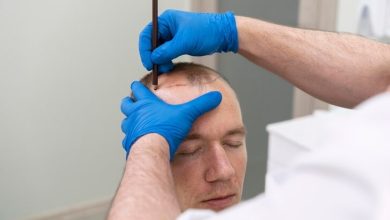7 Different Major Types Of Eczema

When you think about eczema, scaly, red, itchy, dry, or thickened skin might come to mind. Although it is true for persons with medium to darker skin toes, these concerns might not be as apparent and may appear purple, brown, and ashen. Individuals with black and brown skin tones also develop eczema & rashes Santa Barbara on the arms, legs, and torso. This skin condition is more prevalent in kids, but adults can also develop it. Besides, eczema manifests in various forms, each with its triggers and symptoms. Here are the most common types of eczema you should know.
Atopic Dermatitis
Atopic dermatitis is the most prevalent type of eczema. It often begins in childhood, and gets milder or disappears as you age. Atopic dermatitis is part of what medical specialists call the atopic “triad.” Triad means three, symbolically representing the two other conditions often associated with atopic dermatitis, namely hay fever, and asthma.
Contact Dermatitis
If you have red, irritated skin, and/or thick, scaly areas triggered by a reaction to substances you touch, you might have contact dermatitis. This condition manifests in two forms. First, allergic contact dermatitis is the immune system’s response to irritants like metal or latex. Second, irritant contact dermatitis begins once a chemical or another substance irritates the skin.
Seborrheic Dermatitis
Seborrheic dermatitis leads to oily, scaly skin patches that cause dandruff-like flakes. These patches frequently develop where there are more oil-producing (sebaceous) glands on your body, including the scalp, groin, nose, hairline, and upper back.
If this form of dermatitis develops in newborns, it is often known as cradle cap, and generally disappears with time. However, seborrheic dermatitis will probably be a continuous skin concern in adolescents and adults.
Stasis Dermatitis
Stasis dermatitis occurs once fluid leaks out of damaged veins into the skin. This fluid induces inflammation, redness, itching, and discomfort. In most cases, you will develop varicose veins, which are rope-like, thick, damaged leg veins. Left untreated, you are also likely to experience skin sores.
Neurodermatitis
Neurodermatitis is more like atopic dermatitis. It causes scaly, thick patches to develop on the skin. These patches often form on the legs, arms, scalp, genitals, and back of your hands, or neck and are quite itchy, particularly when you are asleep or relaxed.
Nummular Eczema
“Nummular” is a Latin word that means coin. This sort of eczema causes coin-shaped, round spots to develop on the skin. It looks quite different from other forms of eczema, and causes serious itching. Common causes of nummular eczema include an insect bite or chemical allergies.
Hand Eczema
Eczema that only impacts the hands is known as hand eczema. You may develop this skin aging condition if you have an occupation, such as cleaning or hairdressing, where you frequently use chemicals that irritate your skin.
Most eczema flares up and disappears with time. Atopic dermatitis is generally worst in childhood and improves with age. Other types of eczema might stay with you for a lifetime, though you may take measures to manage your symptoms. For instance, you can use moisturizers on dry skin, avoid scratching, and utilize fragrance-free makeup, cleansers, and other skincare products. However, if your eczema causes persistent itching, hyperpigmentation, scaliness, and redness, or affects your self-confidence, you should consult a specialist. Based on the root cause of your eczema and rashes, you might need antihistamines, and antibiotics, among other treatments.




